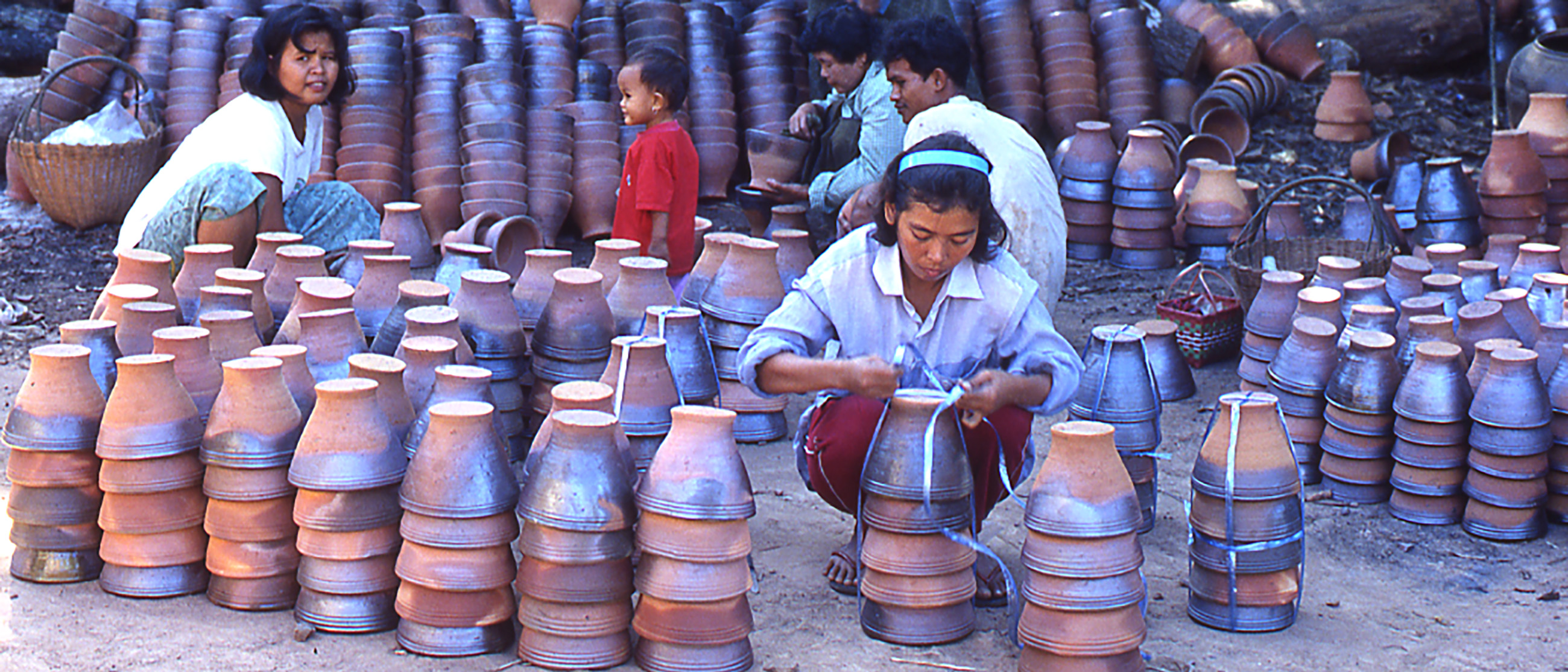
An introduction to the catalogue's features is available in a webinar presented by the authors.
Historical ceramics made in or traded into (therefore in, not simply of) Mainland Southeast Asia, principally between the tenth and twentieth centuries, are the focus of this catalogue. The completed catalogue will present nearly 900 ceramics in the collections of the Freer Gallery of Art and Arthur M. Sackler Gallery, the scope of which encompasses places of production in Mainland Southeast Asia—the modern countries of Vietnam, Cambodia, Laos, Thailand, and Burma (Myanmar)—as well as southern China. Individual objects and regional ceramic groups also represent the importance of the export of wares made in the mainland to insular Southeast Asia (Malaysia, Indonesia, and the Philippines) as well as further afield to Japan and West Asia.
The study of ceramics in Mainland Southeast Asia is a young field that has gained critical momentum only within the past few decades. "Established" knowledge in the field is regularly transformed by new work on associating wares with places of production, characterizing technological lineages, defining chronology and stylistic development, and charting patterns of distribution and trade. The fluidity of the field and the wish to respond to evolving knowledge encouraged the decision to publish this catalogue in online form. Its goal is to frame the objects in the collections—and elsewhere—within evolving current knowledge based on archaeology of production sites, consumption sites, and shipwrecks and reevaluation of historical constructs, as well as within broad discussions of identity, technological development and transfer, regional economics, and trade. The presentation emphasizes the cultural, technological, and commercial roles of ceramics within the region, with a goal of raising questions that might be addressed by future research.
As a medium, ceramics depend upon technology yet also participate in realms of aesthetics, ritual, and collecting—in the cultures within the region as well as beyond. Geology (local materials and their selection, processing, and use), technology (lineages of production techniques, important for both stoneware and earthenware), and geography (relationships of production sites to markets and trade networks) take primacy over style. Like "ethnicity," "style" is a slippery category and can change or be changed as necessary. As studies of contemporary earthenware in Mainland Southeast Asia have shown, pots that look identical in finished form are truly distinguished by core production processes-and these processes define associations across space as well as through time, although it is not simple to detect them in antique pieces (Cort et. al. 1997, Lefferts and Cort 2003).
Individual catalogue entries are drawn directly from object records in the museum's electronic database, TMS (The Museum System, by Gallery Systems, New York). These records change regularly to reflect incorporation of new research or information. The field called Curatorial Comments, in particular, presents raw data collected and recorded over time, based on field research, consultations with specialists, archaeological discoveries, identification of comparable objects in other collections, or written resources. Curatorial comments also record all changes of attribution based on new insights generated by these data. We hope that direct access to these comments may give insight into the process by which objects are identified and characterized.
The objects in the collections may be considered and searched from three perspectives. The Materials section discusses—and makes the collection ceramics available in terms of—clay bodies (earthenware and stoneware) as well as glazes, slips, pigments, resins, and firing processes used for finishing and decorating. Place focuses on the site of production, whether a specific kiln site or a region. An effort is made to suggest links across modern political borders, in order to group production meaningfully by geography and cultural affinity. Time makes a similar attempt to link chronologies, defined inevitably by modern national boundaries, to a sequence of historical maps that present snapshots of Mainland Southeast Asia at a series of moments in its past, when boundaries and associations were considerably different.
Creating new knowledge is a collaborative effort. The sections called Field Notes invite input from readers around the world at all levels of catalogue content, from individual objects to the general discussion of the catalogue as a whole and the field it represents. These attributed comments appear alongside the texts to which they apply. Where appropriate, comments will be incorporated into the permanent object records.
We seek and welcome contributions of new insights and information.
The Library will develop and expand as a collection of essays on central topics specially commissioned for this catalogue, translations of key articles from regional languages and Japanese into English, and "reprints" of older or hard-to-access articles of enduring value.
Ceramic Sherds from Southeast Asia—The Freer Study Collection and its Donors introduces the resources of the Freer Gallery Study Collection, consisting primarily of sherds and wasters collected in the field prior to 1973.
The Bibliography reflects the broad framework within which ceramics are considered in this catalogue. One important aim of this section is to foster awareness of the important scholarship conducted by scholars in Japan, all too often published only in Japanese. Subcategories of the Bibliography single out a variety of specialized topics, including published reports on materials analysis and dates for kiln sites and objects. New entries will continue to be added, and suggestions submitted through Field Notes are welcome.
The Videography lists available film footage.
Links lists other web sites of potential interest to readers of this catalogue.